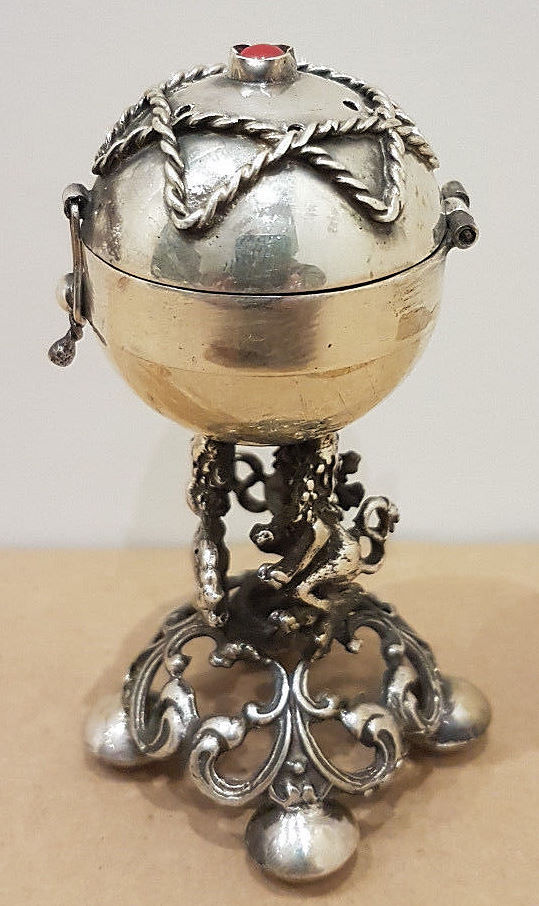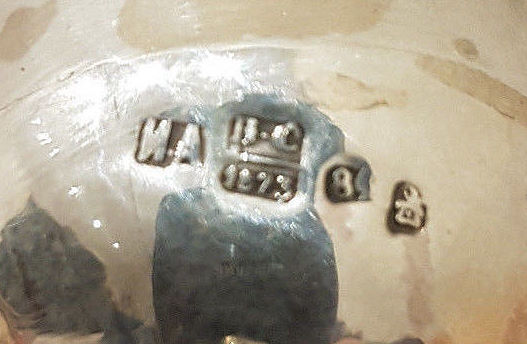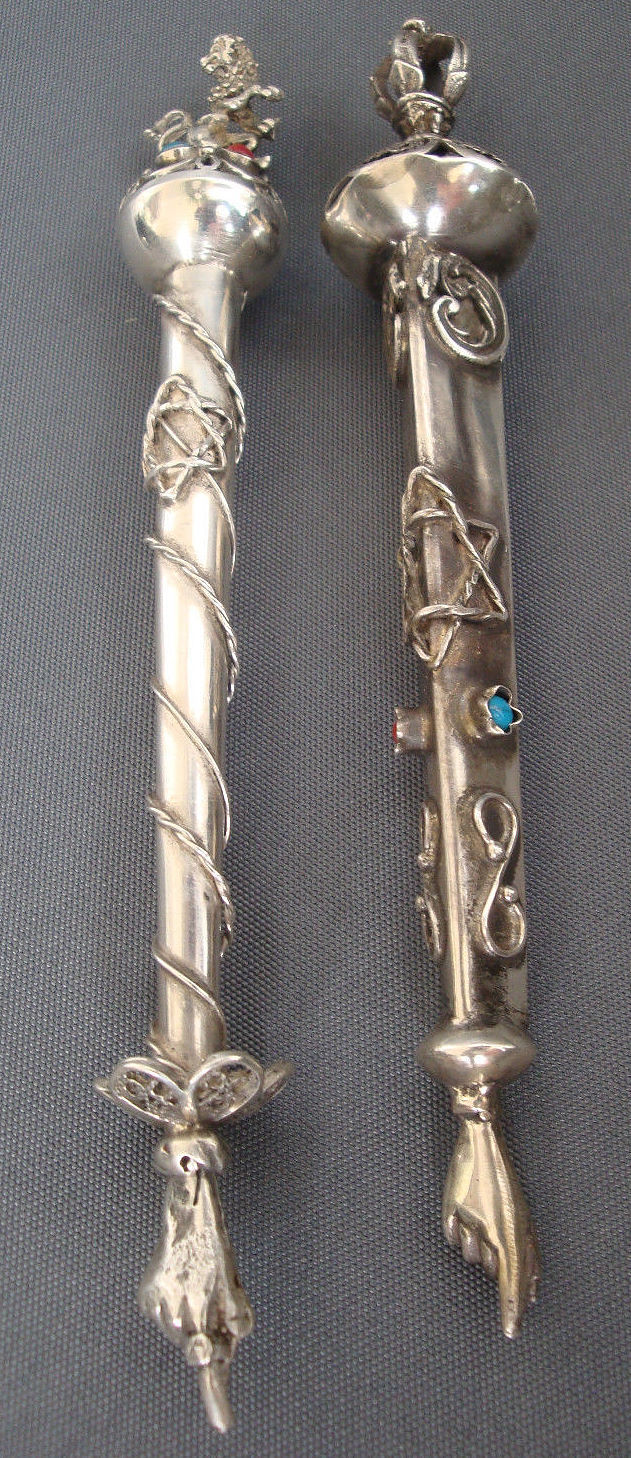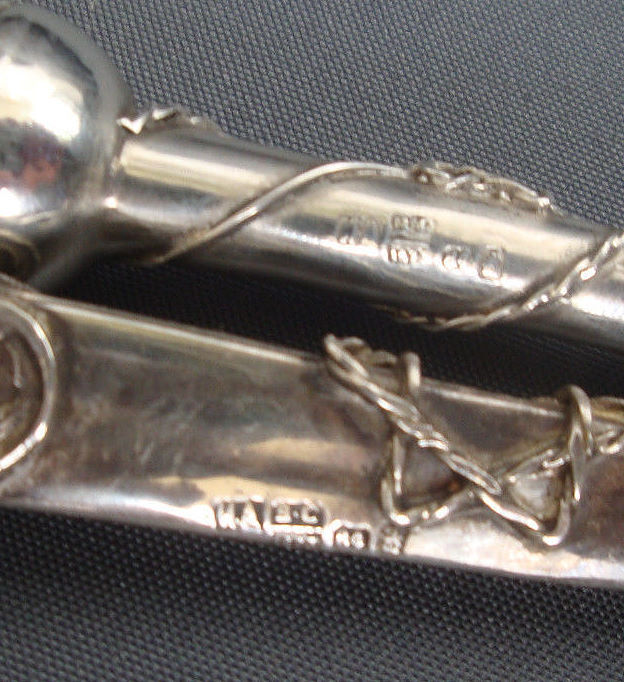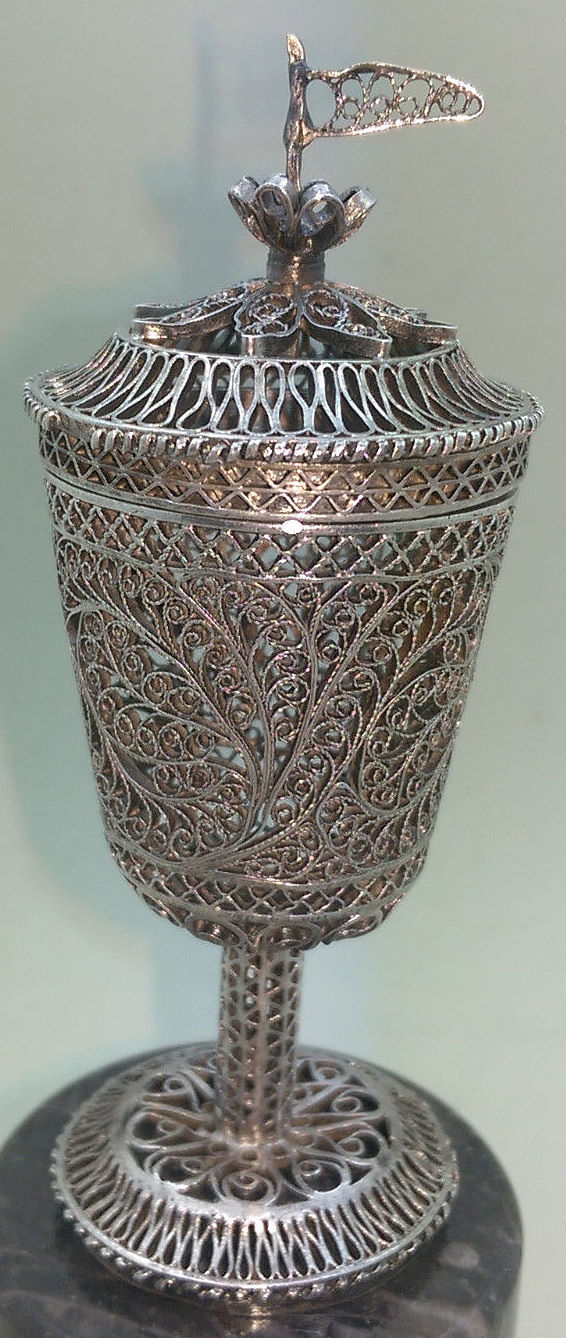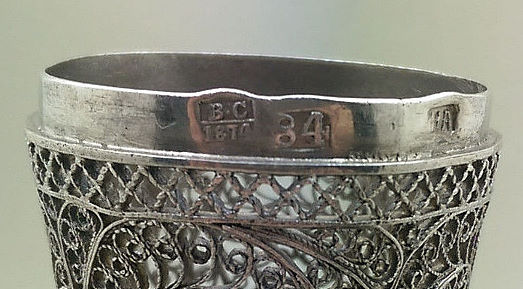Thanks to everybody for discussion. It becomes really interesting. Some people have strange agression for me, but not my problem...
Check this link, please:
http://www.imj.org.il/en/collections/253098
Sorry, I don't follow opinion that spice tower in Jerusalem Museum is made of candle sticks. I do believe my can be a copy, but it becomes less and less probably when I make some research. Following item from the Museum - silversmith is M. Harlap, same as @Dad recognised. According to @Goldstein's materials - active 1897-1915. In the Museum it's dated 1895.
Looking on style/finish/techniques - form is exactly same in both examples. The engraved decoration (not perfectly visible on picture in Museum) - same. There are small differences in floral forms, but very similar.
As I can't find anyting on Russian pages, I started looking in Poland:
1. Here you have Mosze Charlap's (as the name should be written in Polish) spice tower datedto 1899-1904, offered by Polish auction house:
(admin edit - see Posting Requirements )
2. Here is very similar spice container in Polish Museum with good collection of Polish silver, poor quality of picture, I can ask them for detailed pictures and short description:

3. Warsaw City Museum has the Hannukah Lamp by M. Charlap dated 1892, inventory number: MHW 22127/1-2. So dates of Charlap's activity by @Goldstein are doubtful.
4. Antique shop in Poland offered spice container by M. Charlap, dated 1896:
(admin edit - see Posting Requirements )
5.
http://judaika.polin.pl/dmuseion/docmet ... w_nav=true From the database of the Polish Jewish Museum in Warsaw, item from Archeological Museum collection. Obvious mistake in city attribution (archeologists...), but properly recognised maker.
6. From same database as above, dated 1888, in Wlodawa Museum:
http://judaika.polin.pl/dmuseion/docmet ... w_nav=true
7. Same database, different form, but made by Charlap in 1886:
http://judaika.polin.pl/dmuseion/docmet ... w_nav=true
8. Same database, similar form, dated 1886-1908:
http://judaika.polin.pl/dmuseion/docmet ... w_nav=true
9. Same database:
http://judaika.polin.pl/dmuseion/docmet ... w_nav=true
To conclude - I DO NOT BELIEVE so many items in museums (antique shops/auction houses is a different story, most of them don't care about selling fakes) by same maker are fakes or composits made of cadlesticks.
Dates of Charlap's activity varies depending on sources. Sometimes it's mentioned that Charlap worked from 1887, sometimes from early '80 etc. There is number of his works dated 1886, so CHARLAP WAS ACTIVE in 1886 or earlier and date 1895 on my item is ok. As I can believe in Russian sources showing dates of activity of assayer's, for maker's it's not so simple, many mistakes. Like French ebenistes or clockmasters in 18th c. There was a guild, necessary to acchieve master title, but many has different acchieving dates depending on source you check. I do believe it was same in late 19th c. in Poland/Russia. Not everything printed in books is true.
There is almost nothing in Russian language about Charlap (or I can't find), so the best source of knowledge is Poland/Israel. After my research I'm sure it is possible that assayer is Osip Sosnkovskiy, as he worked until 1897 and Charlap made this spice tower in 1895. All correct. Number spice towers similar in from and style (including finish) I found in museums, ensures me that the one I asked about is original. Other stamps are later date, after 1920, used in Poland.
Many thanks to all of you, I would never find out this passionate knowledge without your help.
@Dad - спасибо, ваш пост позволил мне найти все дальнейшие ссылки.
Best regards,
Dane














